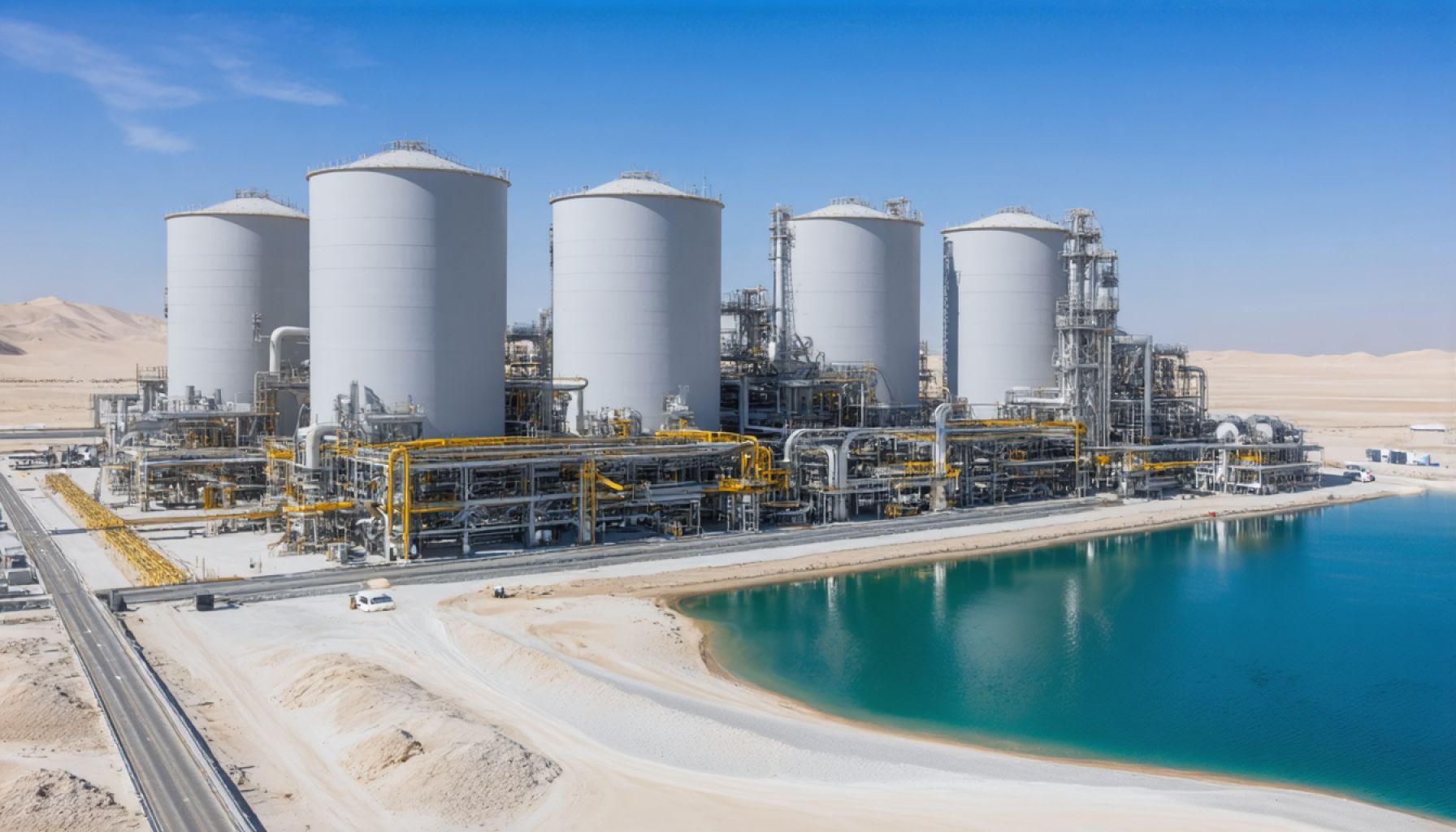- The Middle East is transforming its energy landscape with hydrogen mega-projects, with NEOM in Saudi Arabia leading the charge.
- These projects aim to establish the region as a global hub for hydrogen, the most abundant element, promoting clean and versatile energy solutions.
- Local supply chains are being developed, invigorating the regional economy and creating new opportunities.
- Experts and industry leaders are actively discussing the complexities of hydrogen production and distribution to aid the global shift to sustainable energy.
- The region’s focus on hydrogen promises a reduction in carbon emissions and various economic benefits.
- This initiative reflects a critical step toward integrating technological innovation with environmental responsibility, placing the Middle East at the forefront of the green energy revolution.
In the arid expanses of the Middle East, a silent revolution is unfolding. Beneath the shimmering desert sands and clear blue skies, the region is embarking on a monumental transformation—one poised to redefine the future of energy production globally. Looming large on the horizon are hydrogen “mega-projects,” with NEOM, a futuristic city in Saudi Arabia, spearheading the charge.
As the sun blazes overhead, cutting-edge facilities spring to life, designed to harness the power of hydrogen—the universe’s most abundant element. The strategy is bold: establish the Middle East as a primary hub for this clean and versatile energy resource. Behind the scenes, an intricate web of local supply chains is gradually constructing the backbone of this burgeoning industry, breathing new life and opportunity into the regional economy.
Against this backdrop, industry leaders gather in digital forums, dissecting each nuance of this rapid evolution. Prominent experts dive deep into the intricacies of hydrogen production and distribution, eager to share knowledge that could shape the world’s transition to sustainable energy.
The message is clear and resounding: the Middle East is on the cusp of becoming a global powerhouse in green energy. This pivot towards hydrogen not only promises reduced carbon emissions but also complex economic benefits within the region. As these visionary projects progress, they reflect mankind’s quest to harmonize technological innovation with environmental stewardship. The stage is set for a new era, with the Middle East taking center stage in steering the planet toward a sustainable future.
Unveiling the Hydrogen Boom: Why the Middle East is Leading the Charge
How-To Steps & Life Hacks
Embracing Hydrogen Projects:
1. Understand the Benefits: Hydrogen is clean, versatile, and abundant. Knowing its advantages helps to see its potential impact on energy transition.
2. Engage with Local Initiatives: Participate in webinars or forums hosted by Middle Eastern projects to understand local developments.
3. Adopt Green Practices: With hydrogen’s rise, businesses and individuals can shift to appliances and vehicles aligned with this energy source.
4. Educate your Community: Inform others about the potential of hydrogen energy and sustainable practices.
Real-World Use Cases
NEOM Project in Saudi Arabia:
The NEOM project illustrates the integration of renewable energy to create green hydrogen, intended for various applications, from transportation to industrial uses.
Pilot Programs: Several pilot programs across the globe use hydrogen in fuel cells for buses and trucks, showcasing its ability to power large-scale transportation.
Market Forecasts & Industry Trends
According to a report by the International Energy Agency, the global demand for hydrogen was around 90 million tonnes in 2020, with projections to rise exponentially by 2050. As countries aim for net-zero emissions, investments in hydrogen-related technologies are expected to reach billions over the next decade.
Reviews & Comparisons
Hydrogen vs. Other Green Energy:
– Efficiency: Hydrogen can be stored and transported easily compared to solar and wind, offering a constant supply of energy.
– Versatility: Unlike other renewables, hydrogen serves as both a feedstock and a fuel, making it critical for multiple industries.
Controversies & Limitations
While hydrogen is a promising energy source, concerns remain:
– Infrastructure Costs: Establishing hydrogen infrastructure is expensive and requires significant upfront investment.
– Production Methods: Most hydrogen today is produced using natural gas, leading to carbon emissions unless renewable resources are employed.
Features, Specs & Pricing
– Green Hydrogen: Produced using renewable energy—more sustainable but costly at current production scales.
– Blue Hydrogen: Uses carbon capture in traditional hydrogen production, intermediating environmental impacts.
Security & Sustainability
Hydrogen projects in the Middle East focus on sustainability by reducing reliance on fossil fuels and integrating cybersecurity measures to protect infrastructure from potential threats.
Insights & Predictions
The Middle East’s strong investment in hydrogen predicts regional leadership in global energy markets. This shift indicates a movement toward technological innovation and renewable dependency.
Tutorials & Compatibility
Compatibility with Existing Systems:
– Hydrogen fuel cells are compatible with current infrastructure when used through hybrid systems, easing transition burdens.
Pros & Cons Overview
Pros:
– Reduces carbon emissions
– Diversifies energy supply
– Supports economic growth
Cons:
– High initial costs
– Scarcity of infrastructure
– Environmental concerns with non-renewable production methods
Actionable Recommendations
– Invest Wisely: Consider investing in companies pioneering hydrogen technology for long-term gains.
– Stay Informed: Follow forums and industry news to stay ahead of trends and developments.
Quick Tips
– Start Small: If new to hydrogen, begin with small investments or projects like hydrogen-fueled machinery.
– Network: Connect with professionals in the industry to gain insights.
For more on innovative energy solutions, visit the International Energy Agency.


